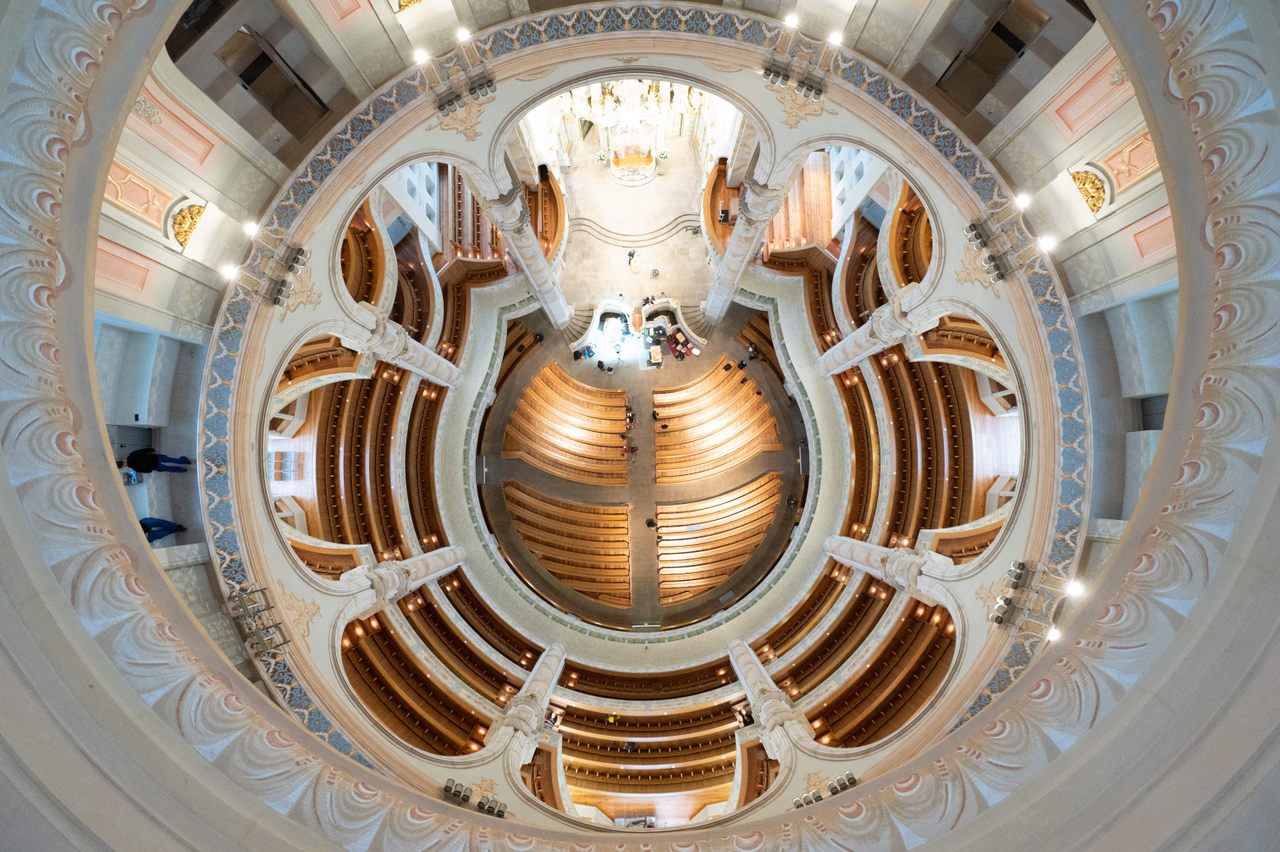How to Keep Europe’s Most Magnificent ‘Praying Room’ Looking Lovely
Every January, the doors close and the cleaning starts in Dresden’s iconic Stone Bell.
Ladies and gentleman, start your vacuums. Have your paintbrushes, thick and thin, at the ready. Tools out! It’s cleaning week at Dresden’s glorious Frauenkirche, a beloved house of worship and international symbol of reconciliation and resilience.
“It’s just a big praying room,” says its lead architect Thomas Gottschlich, a soft-spoken man whom calling understated is, well, an understatement. Gottschlich’s duties include overseeing the iconic church’s maintenance, including the annual January spruce-up, when every inch of the interior gets a once-over. He pauses, considering the building’s place in history. “It is also a masterpiece, in a way, for the architecture of its day,” he adds.
The Frauenkirche has been a part of the German city for a millennium, though its most famous iteration was a Baroque building envisioned by George Bähr and completed in 1743. The church earned the nickname Steinernen Glocke, or Stone Bell, thanks to Bähr’s unique design. “The dome construction is very special, you don’t have it that way in any other building in Europe,” says Gottschlich. “Normally, the domes in other cathedrals are made with a wooden construction, which is covered with copper, lead, or whatever.” Instead, Bähr used local sandstone for the entire dome.

Because it is not the seat of a bishop, the Frauenkirche is technically a church, though it rivals many cathedrals in size. During construction, critics worried about the stability of that massive stone dome, which rises more than 300 feet above central Dresden. But it endured for centuries—until World War II. Although the church initially survived an intense bombing raid in February 1945, it collapsed days later.
For decades the ruins of the Frauenkirche served as a war memorial and gathering point for peaceful protests under East German rule. Shortly after Germany’s reunification, an ambitious, decade-long project reconstructed the church using much of the original 18th-century sandstone. It quickly became a symbol of reconciliation and renewal. Before the pandemic, about two million people visited the church each year—and nearly all left their mark in some way.
“All the entrance areas, all the (paint) on the wood and walls, are damaged by just going around scratching with your clothing, with your bags,” says Gottschlich. “If you touch the (paint), putting millions of fingers on the same place, the color is wiped out, every layer, down to the wood.”

While Gottschlich and his team also monitor the church’s exterior, where moss and crumbling mortar can be problematic, he says that it is the interior that demands much more attention. So, for the last 15 years, for one week in January, the church closes to visitors, and dozens of carpenters, painters, and other craftspeople and cleaners get to work. The crew repairs wobbly benches and worn wood, touches up paint, and scrubs, sands, and vacuums every nook and cranny of the highly ornamented space.
Although the number of visitors has fallen since 2020 due to pandemic restrictions, the annual cleaning event went on as usual in early 2022. Like the constant monitoring of different climate zones around the building to ensure optimal conditions for the church’s organ, art, and load-bearing supports, the annual deep clean is an integral part of ensuring the Frauenkirche stays healthy and stands witness for several more centuries.

Gottschlich notes that, during the reconstruction, the team chose a conspicuous interior location for the 18th-century cross that once topped the church’s tower. “We placed it so that, whenever you leave the church, you pass the old cross, and get an inkling of what it means to be both in history and in present time,” he says. Just don’t expect to find a speck of dust.



































Follow us on Twitter to get the latest on the world's hidden wonders.
Like us on Facebook to get the latest on the world's hidden wonders.
Follow us on Twitter Like us on Facebook